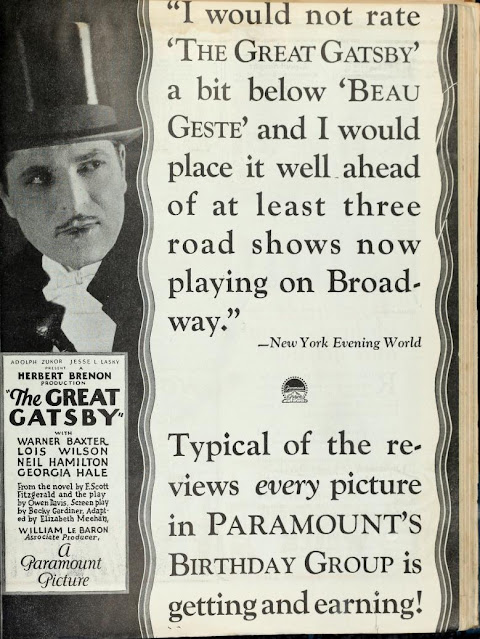In March 2015 I posted on this blog about Lois Wilson in the first of a continuing series about film actresses from the state whose careers started before 1960. Although born in Pittsburgh, Pennsylvania, in 1894, Wilson grew up in Birmingham and graduated from what is now the University of West Alabama. In 1915 after teaching for a brief period and then winning a beauty contest that made her the first Miss Alabama, she headed for Hollywood.
Between 1915 and 1936 Wilson appeared in some 150 silent and sound films, mostly for Paramount. After 1936 she appeared in four more movies before retiring from films for good. She did perform on Broadway and in TV soap operas such as The Guiding Light [January 1954-December 1955] and The Secret Storm [1954]. She died in Reno, Nevada, on March 3, 1988.
One of six films she made in 1934 was No Greater Glory. Directed by Frank Borzage, the movie is based on the 1906 novel The Paul Street Boys by Hungarian author Ferenc Molnar. The anti-war allegory follows two gangs of boys as they prepare to fight over an empty playground. Wilson plays the mother of one of the boys. Apparently, according to a New York Times article cited in the Wikipedia entry, the film was not a financial success.
One viewer obviously taken with the film was George Bridges, a Birmingham sculptor. Bridges saw the film at a special preview at the Empire Theater and was so impressed by Wilson's performance he created this statue seen below.
Although born in Chattanooga, Bridges spent much of his life in the Magic City. After World War I service he met and married Birmingham debutante Eleanor Massey. In 1921 the pair built a home in Homewood's Edgewood community that would serve as an artistic vortex for decades. They traveled far and wide from Paris to Greece and Morocco, but they always returned to host the salons at their home. Among other efforts, the city's Little Theatre originated in discussions there.
Bridges' best known work is the Brother Bryan statue in Five Points South. He also created the monument to Tom Talbot, founder of the International Association of Machinists in Grant Park in Atlanta. Bridges died in 1976. Eleanor, herself a prolific painter, continued as an artistic and civic whirlwind until her death in 1987. Their pink stucco house remains in private hands; you can see many historical photographs of the house and Eleanor and George and their works here. You can read about the recent threats to the house and efforts to save it here.
Lois Wilson is described in the caption as "Birmingham's first picture star" and in "her greatest role in years" in this film. I wonder what happened to the statue?
See below for a bit more about Wilson.
Source: Birmingham News 4 May 1934 via Newspapers.com
Source: Wikipedia
Lois Wilson in The Truth About the Movies edited by Laurence A. Hughes and published in 1924. Her statement is below.
Source: Media History Digital Library
In 1926 Wilson played Daisy Buchanan in the first film version of The Great Gatsby released just a year after the novel was published. Like so many silent films, this one has not survived but a one-minute trailer does exist. Thus we have an Alabama actress playing a character based on Alabama native Zelda Fitzgerald.
Source: The Film Daily 1926 via Media History Digital Library






No comments:
Post a Comment